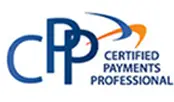Here are some stats that might surprise you.
- 85% of Malaysians seek out e-commerce services on a daily basis.
- More than 38.2 million online transactions were processed last year compared to 14.6 million transactions in 2015.
- Malaysia has the highest penetration of online shoppers in Southeast Asia (67%).
It’s clear that e-commerce is a giant in its own right here in Malaysia and merchants are jumping on board this wave.
But many merchants remain oblivious on exactly how serious the repercussions can be when shifting businesses to the web without first understanding the concept of handling online transactions.
We had a chance to speak with Tee Kean Kang, Group Head of GHL ePayments in Malaysia regarding the explosive growth of e-commerce.
He shared with us the 4 main things merchants need to be aware of when accepting payment online.
1) “Give customers a convenient but secure experience.”
5 years ago, e-commerce was not what it is today.
Back then, it was just a platform for bill payments and a marketplace to lelong items. Businesses didn’t feel the need to go online so payment gateways were built with basic functions.
“We only provided an interface with sufficient security, but things have changed. Nowadays, there are many security functions and features to help merchants focus on other aspects of the business,” Kean Kang said as he reminisced on their past.
Merchants who are shifting online would need to find a way to provide convenience to all customers while still making sure the transactions are completely secure.
Payment Gateways are regulated by Central Bank and Schemes, making them compliant with the Payment Card Industry Data Security Standard (PCI DSS). So businesses and customers alike can feel secure when accepting and making payments online.
“We revamped our hosted payment page to make it look as if it is the merchant’s website, and customers can key in card details with no worries as the payment page is PCI Compliant. Merchants can then focus on sales and marketing,” said Kean Kang.
e-GHL has a feature for merchants that helps with their sales, where payment can be done on the checkout page itself. This is specially for merchants who don’t like redirecting customers to a different payment page.
2) “It’s crucial for merchants to comply to the security standards set.”
A survey showed that 89% of consumers look for a secure payment facility option when asked what impacts their online shopping.
All companies handling credit card payments are required to follow PCI DSS which is developed to protect card transactions and prevent the misuse of cardholders’ personal information.
As online payment gateways deal with personal payment data, Kean Kang said that merchants need to comply to the PCI DSS standards more now than ever.
There are 4 levels (where level 1 is the highest and level 4 is the lowest) to PCI DSS. Merchants are ranked based on their transactions and PCI uses this to determine security risks for their businesses.
So the higher the level, the more secure the data obtained is kept.
“e-GHL is currently ranked at level 1 and has been for awhile. We make sure to fully comply on whatever regulations is set, which is standard practice for players in the market to do this,” said Kean Kang.
3) “Be educated on the importance of a safe payment system.”
With e-commerce’s rapid growth comes the influx of traditional merchants wanting to go online but not paying enough attention to security.
Commonly, traditional merchants are used to less secure payment systems such as providing bank slips as evidence but that holds high risk for fraud.
Merchants may think online payment gateways are not necessary, but you can’t blame customers for being suspicious when they’re asked to just transfer money into a bank account (as opposed to being directed to a payment page).
The 2 important security steps e-GHL makes sure their merchants understand are:
- 3D Secure (3DS): Mainly for card payments where customers will be redirected to a bank’s payment page to key in a TAC or OTP number to confirm payment.
- 2 Factor Authentication (2FA): Mainly for online banking systems where 2 steps are involved to confirm payment (i.e logging into an online bank account and keying in the TAC number).
4) “Don’t ignore e-commerce trends—adapt them.”
- First trend: Emergence of mobile users.
Online shopping now is shifting from being solely on desktop to mobile. Technology has made it possible for mobile browsing to be as seamless as web browsing thus users have increased.
Merchants would need to learn how to make their service readily available for mobile platform to not miss out on any consumers.
- Second trend: Alternate payment methods.
Nowadays, payments don’t just consist of online banking and cards. Options like e-wallets and O2O payment (online-to-offline) exist.
e-GHL works with their sister company, e-pay, to give customers an option of purchasing online without needing a bank account or cards.
How it works is e-pay generates a code after checkout. The payee then needs to find an e-pay terminal to key in the code and then pay in cash.
After payment is approved, the transaction will be cleared in real-time. This easy method is geared for youngsters with no bank account or those sceptical on using cards or online banking for online purchases.
With e-commerce growing, a payment gateway shouldn’t only offer to merchants who want it.
Although there is high interest for merchants to shift their businesses online, many are unsure on what is the next step to take.
So e-GHL’s tactic is to educate and persuade traditional businesses to go online.
One of their initiatives include government agencies, following the nation’s vision for our society to go cashless.
“We approach these people not to sell them a product, but a concept. We have the right partners and resources to assist them through the payment processing part so they can shift online,” said Kean Kang.
e-GHL also targets companies that have their own credit line for customers to do installments with.
Companies would typically look for the cheapest services, and that is a battle Kean Kang is not interested to fight.




